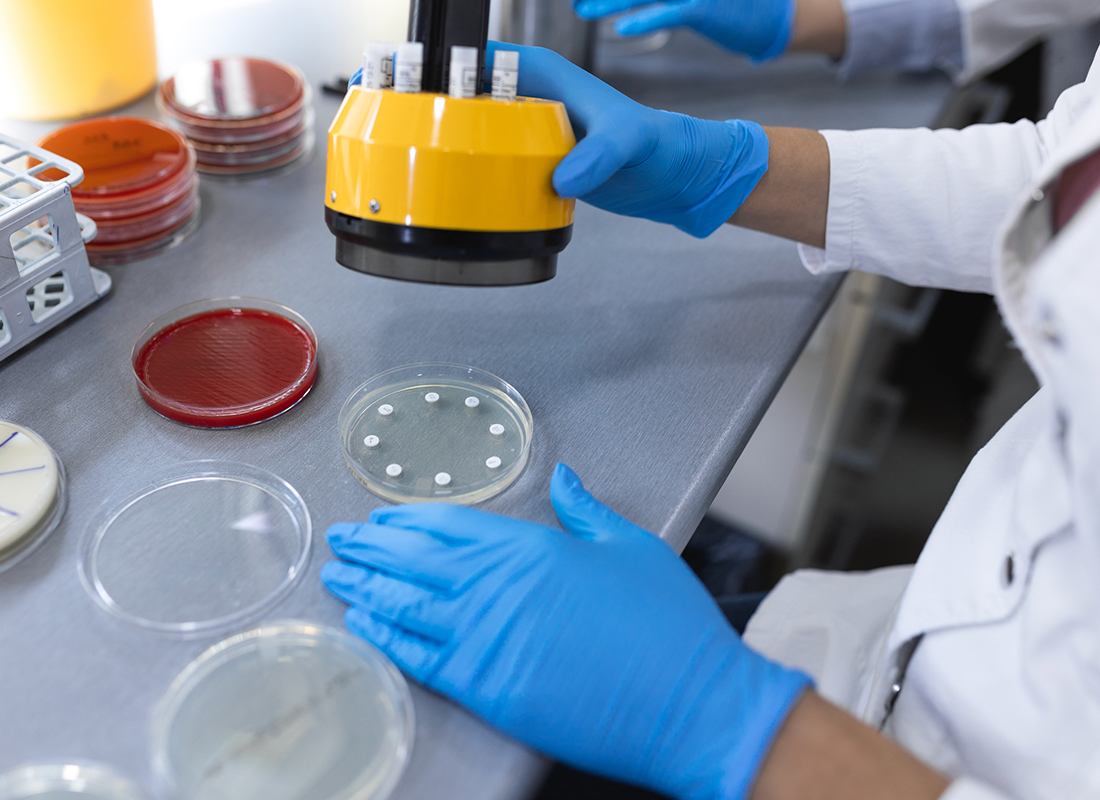Advancements in Antimicrobial Susceptibility Testing: Part 1
A brief overview of antimicrobial susceptibility testing, current methods used, and new methods on the horizon.

The field of microbiology has seen significant advancements in recent years. Most popular has been further development and deployment of nucleic acid amplification technologies. While competition in this space is intriguing to watch and such new technologies are exciting to adopt, they are perhaps overshadowing another area of technological advancement: antimicrobial susceptibility testing (AST).
What is antimicrobial susceptibility testing (AST)?
AST is a laboratory procedure used to determine the susceptibility and resistance profile of an organism to an antimicrobial. The procedure involves isolating pathogenic organisms from culture and incubating the organism in the presence of select antimicrobials and at varying concentrations. Readouts are then performed at the procedure endpoint using established and FDA approved clinical criteria.
Why is antimicrobial susceptibility testing important?
AST is a critically important pillar in infectious disease diagnostics, yielding information critical for successful clinical treatment.
Bacteria, yeast, molds, and mycobacteria have varying degrees of susceptibility and resistance. Without determining a pathogen’s susceptibility profile, antibiotic or antifungal treatment carries a high degree of uncertainty with the risk of treatment failure. Treatment failure leads to further morbidity and mortality, driving up the total cost of care. In an era moving ever closer to population health, total cost of care is of increasing importance.1
The investigation of the susceptibility profile is therefore a crucial piece of information necessary for guiding patient treatment decisions.
How AST is performed today
Culture on solid media is the most common method used to isolate disease-causing pathogens such as bacteria, mold, viruses, etc. Suspected pathogens are put into liquid suspension commonly referred to as broth microdilution. This broth microdilution (BMD) is used to inoculate reagent cards or wells containing a battery of antimicrobials at doubling concentrations. After six to 24 hours or more, the card or wells are assessed for bacterial growth or colorimetric changes indicating metabolic activity. Using regulatory approved criteria, a lack of bacterial growth or colorimetric change may be interpreted as “susceptible” at the listed concentration.2 These measurements determine whether a drug/bug combination is effective for treatment.
Current mainstream methods
AST methods used in practice today have remained relatively unchanged for several decades. Four primary vendors compete in this space, all of whom use the same principle of broth microdilution against a formulary of antimicrobials. The organism’s susceptibility profile is decided by endpoint determination for visual or colorimetric changes.
A fifth, less common AST method, is the traditional practice of disk diffusion. Disk diffusion utilizes a poured agar plate inoculated with a lawn of saline suspended organisms. Antimicrobial disks are then inoculated onto the agar surface. Susceptibility is determined by using a caliper tool to measure the zone of inhibition surrounding the antimicrobial disk with comparison to a standard control organism.
It is important to note that organisms used for broth microdilution and disk diffusion must be 18 to 24 hours old for best performance. It has been determined that organism growth rate is generally in a plateaued and steady state after 18 to 24 hours of incubation.2 Organisms in the exponential growth phase can produce false resistance profiles on current systems whereas organisms in a declining growth phase can produce false susceptibility profiles. It is therefore critical to follow strict performance protocols to generate the most reliable AST results with current methods.
New methods on the horizon
After decades lacking significant innovations, the landscape of AST is undergoing a new reckoning. Promising new methods for more rapid AST are arriving with performance being concordant to the historical broth microdilution methods.3 These newcomers are deploying the following methods for expediting AST workups:
-
- Fluorescence in situ hybridization (FISH)
-
- Single-cell microscopy (various methods)
-
- MALDI-TOF MS
-
- Microfluidics and photomicrography
-
- Nucleic acid amplification (NAA)
- Next-generation sequencing (NGS)
Only one of these newcomers has thus far received FDA approval for use for expedited AST. However, progress appears promising for several methods and warrants close monitoring.
In the next article, we will cover further details regarding what to know and look for in these new methods as well as the possible advantages they offer to the space of AST.
References:
Subscribe to Clinical Diagnostics Insider to view
Start a Free Trial for immediate access to this article